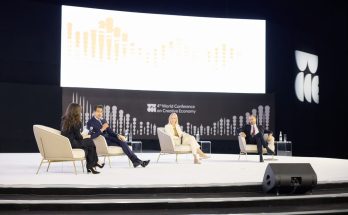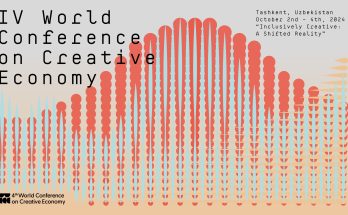 Should it worry us that Modi sarkar resembles the Ethiopian Haile Gebrselassie, the greatest long-distance runner ever and not Usain Bolt, the 100-metre thunderbolt from Jamaica?
Should it worry us that Modi sarkar resembles the Ethiopian Haile Gebrselassie, the greatest long-distance runner ever and not Usain Bolt, the 100-metre thunderbolt from Jamaica?
Not really. The 100-metre dash, whilst spectacular and crowd pulling, is a good tactic for disaster mitigation but disastrous for managing a huge, diversified economy. The marathon ANALOGY suits India better. It is a test of endurance, grit and determination. Outcomes are only visible towards the end of the 42 km race. Those in the lead for the first eight km rarely end up winning.
suits India better. It is a test of endurance, grit and determination. Outcomes are only visible towards the end of the 42 km race. Those in the lead for the first eight km rarely end up winning.
Other than physical fitness the marathon runner needs a disciplined mind, which restrains the urge to sprint till the last mile whilst maintaining a planned and steady pace all through. Also important is the ability to transcend the near continuous pain and stress, and remain focused on the goal.
Modi sarkar has expectedly followed the epic Bollywood masala — a marathon interspersed with sprints. Citizens have been kept entertained by a blitzkrieg of short-term Bolt spirits to simulate inclusive ascent on a rising elevator of well being, whilst working steadily behind the scenes towards medium-term goals.
The opening of 80 million small bank accounts; the launch of three social protection (pension and insurance) schemes; the attractively packaged, near weekly engagements with foreign governments on their soil and ours; pushing through the border realignment with Bangladesh; the quietening down of tension with China in Arunachal Pradesh; the relatively incident-free border with Pakistan; the warming relationship with Sri Lanka; the race to make India “cough-free” by substituting clean renewables with dirty fossil fuels; the quick response to natural disaster in Nepal and Bihar; the disciplining of the bureaucracy and the Bharatiya Janata Party’s political cadres; effective management of the sensitive relationship between the BJP and its regressive cultural font — the Rashtriya Swayamsevak Sangh; the visible dominance of the Prime Minister’s Office, which had wilted under the previous government; the productive alignments with Didi’s (Mamata Banerjee) government in West Bengal; Mufti Muhammad Sayeed’s People’s Democratic Party in Kashmir; the Telugu Desam Party in Andhra Pradesh; Amma (J. Jayalalithaa) in Tamil Nadu, are all signals of aggressive political outreach.
But behind the scenes, several half-marathons have also been initiated — the blistering pace of tendering and award of infrastructure projects with results expected over the next three years; the quick decisions on defence procurements; the swift auction of coal mines to resolve the fuel supply bottlenecks; the opening up of the defence sector to private INVESTMENT and management; relaxation of foreign direct investment
and management; relaxation of foreign direct investment constraints in insurance — both major sources of good jobs and the quiet continuation of the previous government’s Aadhaar electronic platform as a primary mechanism for verifying identity so necessary for subsidy reform via direct cash transfers.
constraints in insurance — both major sources of good jobs and the quiet continuation of the previous government’s Aadhaar electronic platform as a primary mechanism for verifying identity so necessary for subsidy reform via direct cash transfers.
Prime Minister Narendra Modi has run the first leg of the marathon with exceptional skill. But this was the easy part. The next 16 km till 2017 is what will make or break his chances for re-election in 2019. Five key measures stand out.
First, with two big state-level elections coming up, the BJP will need to marry the compulsion for populism with fiscal rectitude, which has been the leitmotif of the first year of Arun Jaitley as the FINANCE minister of India. Reigning in inflation is a continuous struggle in such circumstances. It is fitting that the Reserve Bank of India continues to focus on managing money supply and interest rates. The ministry of finance
minister of India. Reigning in inflation is a continuous struggle in such circumstances. It is fitting that the Reserve Bank of India continues to focus on managing money supply and interest rates. The ministry of finance will have its hands full substituting for the erstwhile Planning Commission in allocation of funds and enhancing real-time, expenditure management systems and metrics to ensure “value for money” spent. Key indicators to watch will be achievement of the targeted reductions in revenue, current account and fiscal deficits.
will have its hands full substituting for the erstwhile Planning Commission in allocation of funds and enhancing real-time, expenditure management systems and metrics to ensure “value for money” spent. Key indicators to watch will be achievement of the targeted reductions in revenue, current account and fiscal deficits.
Second, introduce a poverty and private jobs creation filter. Share the assessments publicly via a “dashboard” of proposed allocations to make the allocation process more transparent and participative. Direct democracy is of Mr Modi’s signature tune. This is also a great way of self-restraining crony capitalism and populism.
Third, cut loose the railways and the public sector companies and banks from the crippling constraints of ministerial intervention. Corporatise all production and service delivery entities as a first step to reform, followed by administrative autonomy and selective listing of stock. The creeping tendency, reminiscent of the “Indira Gandhi ‘commanding heights’ syndrome”, of falling back on the public sector for getting quick results is unfortunate. The international experience shows that poor INVESTMENTSare the outcome if public funds are plentiful. India cannot afford “bridges to nowhere”, even if they create jobs in the short term. This implies fixing the “broken” public-private partnership (PPP) model, not effectively junking it altogether with the government assuming all the risk, as is being considered currently.
Fourth, trim the flabby Union government. The UK model of agencification and administrative reform, tight budget constraints, monetisation of assets and the levy of user charges, fits the Indian context best. Look for “asymmetric reform”, rather than whole-of-government approaches. The Aadhaar unique ID experiment is a useful example of the benefits of strategic, but narrow reform. The “Namami Gange” Clean Ganga Mission is another example. If “cooperative federalism” is to be more than just an attractive slogan the Union government must be the pied-piper, which the state governments follow.
Fifth, fix the big institutional constraints to rapid development. The last thing we need is a clash of titans — Rajya Sabha versus the government — a replay of the dysfunctionality of the American political architecture; judiciary versus the executive. Are we really keen to tread the Pakistan route? Avoid proxy veto by the Union governors over elected state governments — a throwback to the ugly days of the Emergency in the 1970s. Implement the 74th Amendment (1992), which mandates decentralisation but remains ignored two decades later.
The final 16-km dash in 2018 and 2019 will be easy if the half marathons already initiated are run well, over the next two years. The trick is not to sacrifice public interest in an all-out attempt to win state elections in Bihar and Uttar Pradesh. The question remains: will the BJP’s marathon mind rule or its sprinter’s muscles dominate?
Author Profile
- India Writes Network (www.indiawrites.org) is an emerging think tank and a media-publishing company focused on international affairs & the India Story. Centre for Global India Insights is the research arm of India Writes Network. To subscribe to India and the World, write to editor@indiawrites.org. A venture of TGII Media Private Limited, a leading media, publishing and consultancy company, IWN has carved a niche for balanced and exhaustive reporting and analysis of international affairs. Eminent personalities, politicians, diplomats, authors, strategy gurus and news-makers have contributed to India Writes Network, as also “India and the World,” a magazine focused on global affairs.
Latest entries
 DiplomacyOctober 4, 2025UNGA Resolution 2758 Must Not Be Distorted, One-China Principle Brooks No Challenge
DiplomacyOctober 4, 2025UNGA Resolution 2758 Must Not Be Distorted, One-China Principle Brooks No Challenge India and the WorldJuly 26, 2025MPs, diplomats laud Operation Sindoor, call for national unity to combat Pakistan-sponsored terror
India and the WorldJuly 26, 2025MPs, diplomats laud Operation Sindoor, call for national unity to combat Pakistan-sponsored terror India and the WorldJuly 25, 2025When Fire Ends, Diplomacy Begins
India and the WorldJuly 25, 2025When Fire Ends, Diplomacy Begins India and the WorldJuly 16, 2025Operation Sindoor and its Aftermath: India’s Successful Diplomatic Outreach
India and the WorldJuly 16, 2025Operation Sindoor and its Aftermath: India’s Successful Diplomatic Outreach







